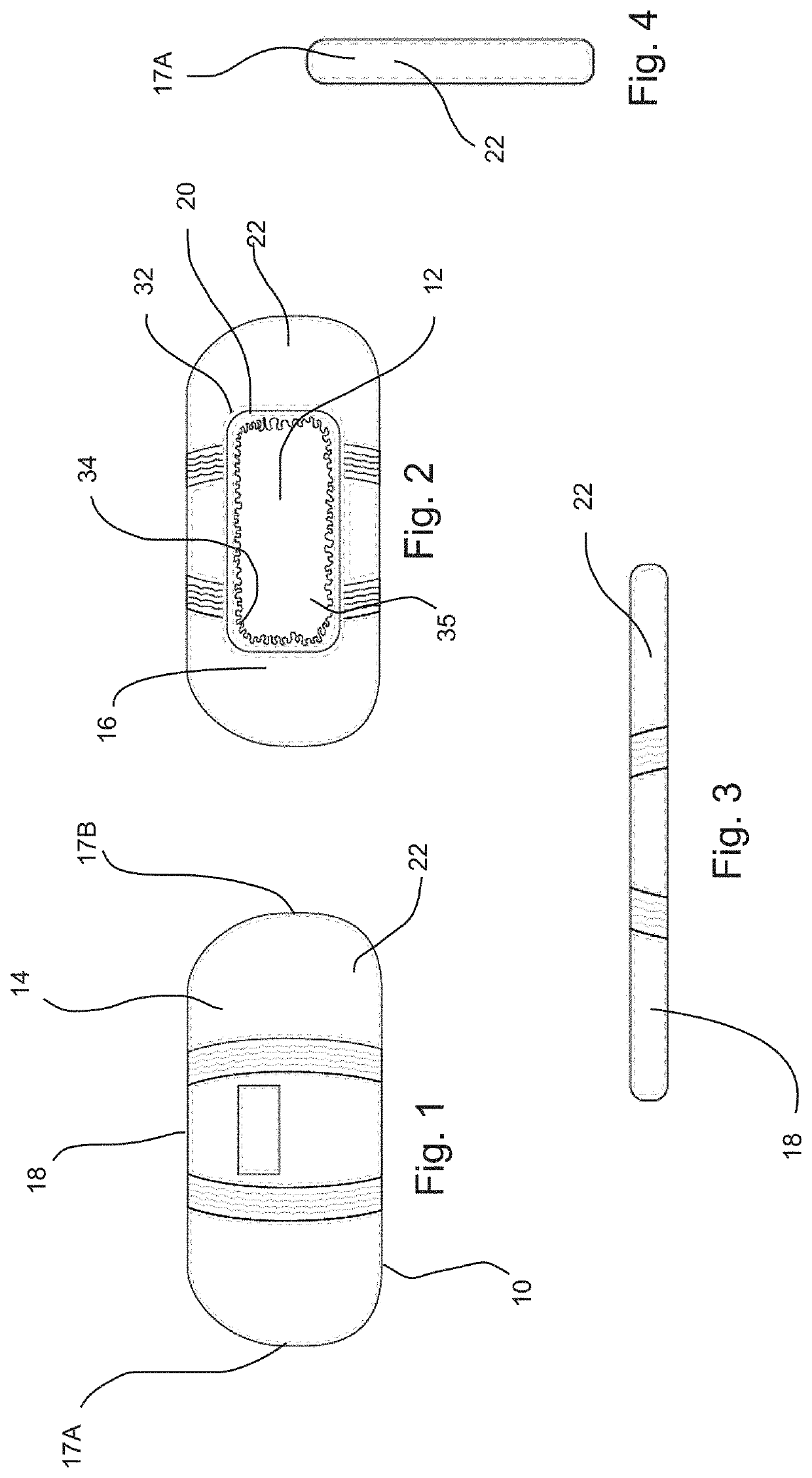Hygienic Headrest Cover and Kit
a headrest cover and hygienic technology, applied in the field of hygienic headrest covers, can solve the problems of unsanitary surface, insufficient sanitization of cleaning process, and inability to clean the headrest, so as to reduce the amount of handling, reduce the transmissibility of skin, and be easy to install and remove.
- Summary
- Abstract
- Description
- Claims
- Application Information
AI Technical Summary
Benefits of technology
Problems solved by technology
Method used
Image
Examples
Embodiment Construction
[0039]The invention, shown primarily in FIGS. 1-4, is a headrest cover for use with the headrest portion of a vehicle seat as shown in FIG. 5A. As noted, vehicles of all different types come with headrests. In particular, airplanes may have a protruding headrest, as shown in FIGS. 6 and 8. As passengers travel in the seats, the headrest becomes soiled with microbial and particulate matter from previous passengers. The invention seeks to mitigate the risk of contacting a soiled headrest by providing a protective barrier between the scalp of a passenger and the surface of the headrest.
[0040]The invention is constructed to allow stretchability by using a form-fitting fabric, such as nylon or lycra. However, other materials may be used too, such as neoprene. The headrest cover is constructed into a unitary piece that does not require straps or clips, as most of the prior art does. Instead, the headrest cover envelops the headrest and clings to the sides, thereby taking the shape of the ...
PUM
 Login to View More
Login to View More Abstract
Description
Claims
Application Information
 Login to View More
Login to View More - R&D
- Intellectual Property
- Life Sciences
- Materials
- Tech Scout
- Unparalleled Data Quality
- Higher Quality Content
- 60% Fewer Hallucinations
Browse by: Latest US Patents, China's latest patents, Technical Efficacy Thesaurus, Application Domain, Technology Topic, Popular Technical Reports.
© 2025 PatSnap. All rights reserved.Legal|Privacy policy|Modern Slavery Act Transparency Statement|Sitemap|About US| Contact US: help@patsnap.com



